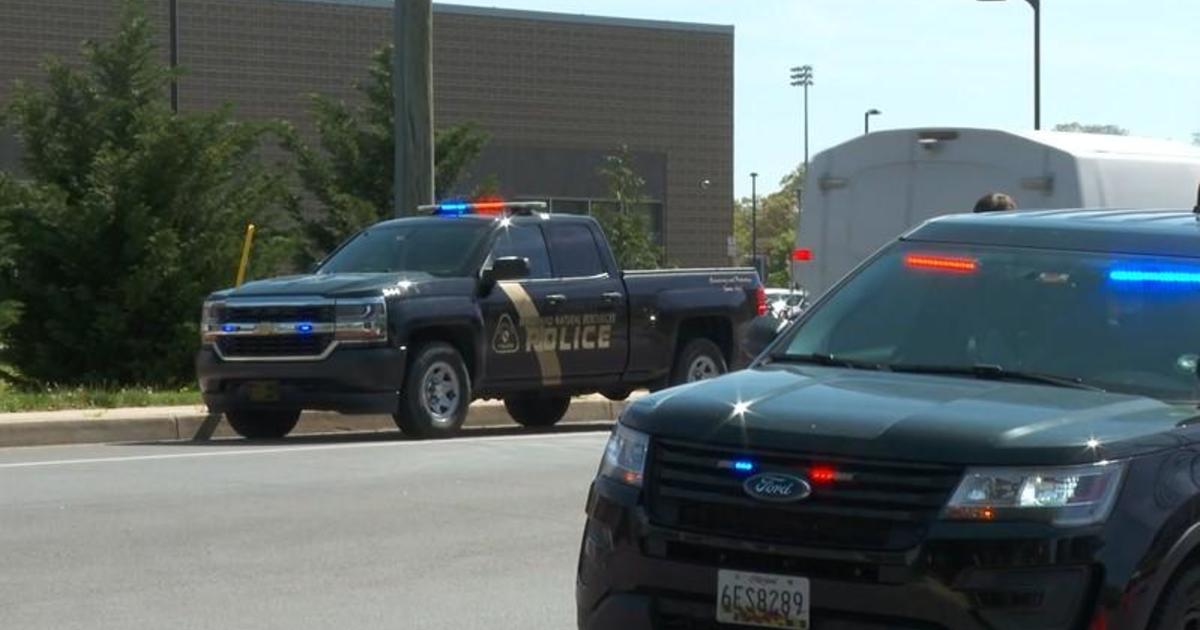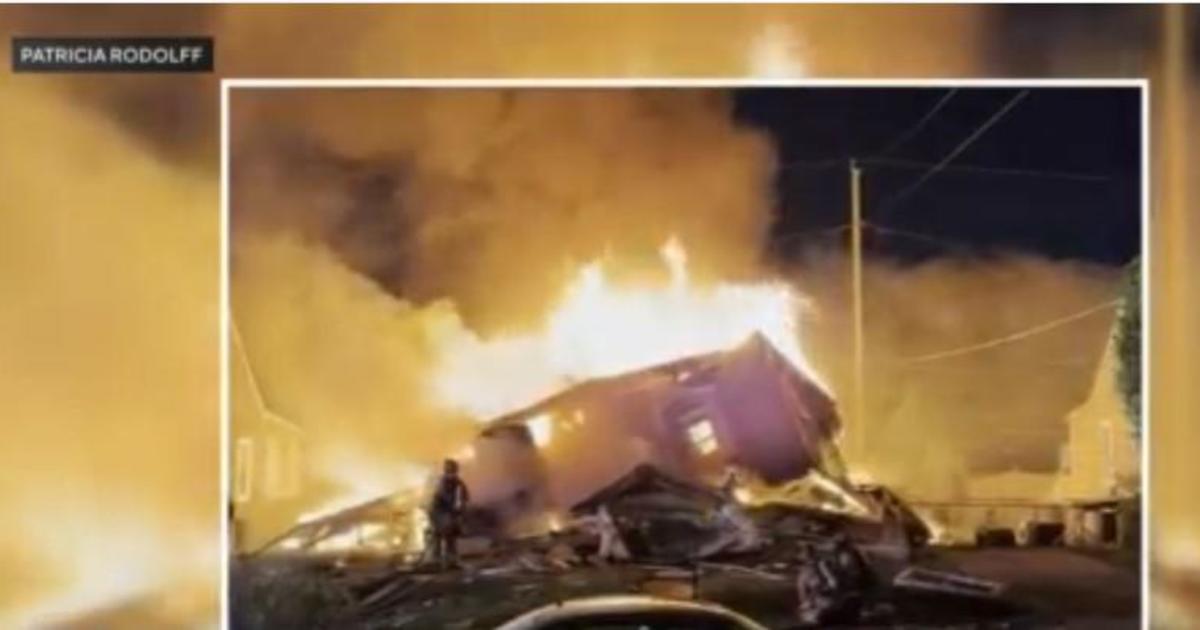Opioid Crisis May Be Rural Maryland's Worst Problem
DENTON, Md. (AP) — If there is one hopeful thing about Maryland's opioid crisis, it's that no one is denying the obvious.
"Very honestly nothing is working," said Frederick County Sheriff Chuck Jenkins. "It's unlike anything we've ever seen."
For rural areas where communities are small and the stigma is large, opioids can be particularly insidious. The guy who jumped out of the moving ambulance after getting revived by naloxone might be an old high school classmate. The woman selling drugs at the hospital to fellow addicts could be the little sister of a good friend.
The epidemic is also a serious drag on government and medical resources in places where budgets are already stretched. Then there's the psychic toll, especially on police, ambulance and hospital workers who slug it out on the front lines, often with the same addicts, day after day.
But while the opioid crisis appears to be kicking Maryland's rural populations while they're down, the silver lining might be in the size and inherent closeness of those communities, which are beginning to coordinate efforts to combat opioids in ways that simply aren't possible in the state's more populated counties.
Localizing the problem
"In our small area, opioids affect pretty much every family one way or another," said Tommy Conneely, who runs the Lost Sheep Recovery Mission in Caroline County and said he has been seven years sober from alcohol.
Caroline, like other rural counties, is beginning to harmonize their anti-opioid efforts across a wide range of public, private and faith-based groups. The county's drug and alcohol abuse council includes a diverse collection of law enforcement, education, substance abuse and mental health officials.
And people like Conneely, who, as an ex-cop now involved in faith-based recovery efforts, brings a wholly unique perspective.
The Caroline drug council is in the midst of a series of events hosted at volunteer fire departments, where the FBI documentary "Chasing the Dragon" is being shown, followed by a discussion initiated by former addicts and their parents.
"We found that we had a lot of family members (attend) who had loved ones in active addiction who needed support," said Holly Ireland, executive director of Mid-Shore Behavioral Health, a referral and planning agency that receives some state funding and operates in Caroline, Dorchester, Kent, Queen Anne's and Talbot counties.
"What we haven't quite figured out is how to tackle engaging the community that is addicted," Ireland added.
In Harford County, which has one of the highest opioid-related per capita death rates in Maryland, the approach is also multifaceted. They've got drug education happening in elementary schools, a prescription return program, rehab for opioid-addicted mothers, a special opiate court and a host of other initiatives.
"We broke down barriers between the sheriff, the board of education, the health department and worked together to go into schools," said County Executive Barry Glassman, R-Harford. "Our program was recognized by the National Association of Counties for the way it was opened up to the whole county to be part of it."
And yet Harford's opioid-related death rates have gone up in almost every category since 2014.
"We're not gonna give up, but it's gonna be one of those long-term struggles," Glassman said. "It's a generational thing that might take 20 years before we get a grip on it."
Last August, Barry Ronan, president and CEO of Western Maryland Health System, joined an opioid task force that brought together a similarly wide cross-section of people in Allegany County.
It happened after Ronan was forced to ask that a police officer be stationed in Western Maryland's emergency room from 3 p.m. to 7 a.m. every day to deal with the surge of sometimes violent addicts arriving for treatment.
"Our staff was being spit upon, assaulted, equipment was being broken," he said.
In the past two years, Western Maryland Health has spent nearly $1.5 million in additional costs from opioid-related patient treatment.
"(The opioid crisis) eats up a lot of resources," said Allegany County Sheriff Craig Robertson. "It takes away the ability for us to do normal law enforcement functions like checks on high-crime areas and speeding enforcement."
The Allegany task force that includes Ronan and Robertson now meets monthly to coordinate efforts and share ideas.
"Trying to address this from a community perspective has paid off," said Ronan, at least in terms of unifying the county's approach. Ronan mentioned things like putting mental health professionals in ambulances as one of the efforts the group is now trying.
"Over the last few months, we've seen a slight decline in the OD numbers, which is encouraging," Ronan said.
Emergency state
In 2016, there were 918 heroin-related deaths in Maryland through September according to the state's health department, up 23 percent from the total in 2015 and up nearly 60 percent from 2014's total.
Scarier still is the sudden rise in the use of fentanyl and carfentanil, synthetic opioids that can be more than 1,000 times stronger than morphine and are often mixed with heroin, to fatal effect. Fentanyl-related deaths increased nearly 120 percent between 2015 and the first nine months of 2016, to 738 statewide.
On March 1, Gov. Larry Hogan declared a state of emergency around the state's opioid epidemic, committing $50 million over five years to the problem. It was the latest escalation in a series of his administration's efforts to slow the state's opioid death toll, which continued to rise in 2016, according to the latest reporting.
What Hogan's emergency edict calls for is an action plan to be made and then implemented across a slew of state and local agencies throughout Maryland.
The effort is being led by Clay Stamp, the governor's senior adviser for emergency management and the former director of emergency services for Talbot County, a rural area on the Eastern Shore.
"Education and prevention will move the needle," said Stamp. "What it does is remove the demand from supply and demand."
Stamp also said that public health will be the focus of the state's plan, and likened the scale and approach of forthcoming efforts to those that were used for anti-smoking and HIV education in the past.
Some argue the state's entire approach is misguided and destined to fail.
"The governor created a task force for heroin and it didn't have a person in recovery on the task force," said Mike Gimbel, the director of substance abuse for Baltimore County from 1980 to 2003. "They don't understand heroin. They really think it's like teen smoking. This isn't drug prevention 101."
According to Gimbel, there's unlikely to be any headway made against the problem without a primary focus on long-term treatment and rehabilitation, not on naloxone, an anti-overdose drug, and vivitrol, which blocks opioid receptors in the brain for up to a month.
"We're not going to medicate our way out of it. You don't solve a drug problem with more drugs," Gimbel said. "The model should be treatment on demand."
Funding for Hogan's state of emergency effort is authorized under the recently passed HOPE Act, which calls for a series of initiatives that revolve around reforming drug courts, naloxone distribution and hospital discharge procedures. The bill also calls for the establishment of "crisis treatment centers," but requires only one to be up and running before June 2018 and mandates no others.
"It's important that on the back side, there's treatment," said Stamp. "We have to beef up our ability to help people fighting addictions."
A matter of faith
The inclusion of faith-based organizations on local drug councils is indicative of the all-hands approach in rural areas. What religious groups can bring to the opioid fight is significant in terms of manpower and a direct connection to the community.
"We're a microcosm of what's going on in the street," said Pastor David Ziler of the Union Rescue Mission in Cumberland, a homeless shelter with 62 beds that serves about 200 meals a day. "If it's happening, we're going to see it before anyone else is seeing it."
Ziler believes churches and religious organizations can provide what the government can't.
"We're throwing money at the problem, but we haven't thrown people at the problem," Ziler said. "(Religious organizations) are the biggest volunteer group in the world and we can offer more man hours than anyone."
Follow @CBSBaltimore on Twitter and like WJZ-TV | CBS Baltimore on Facebook
(© Copyright 2017 The Associated Press. All Rights Reserved. This material may not be published, broadcast, rewritten or redistributed.)



